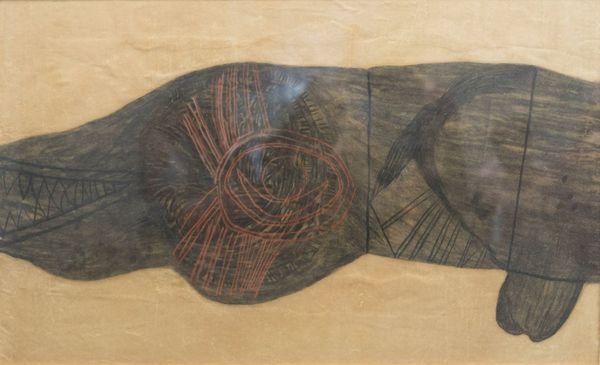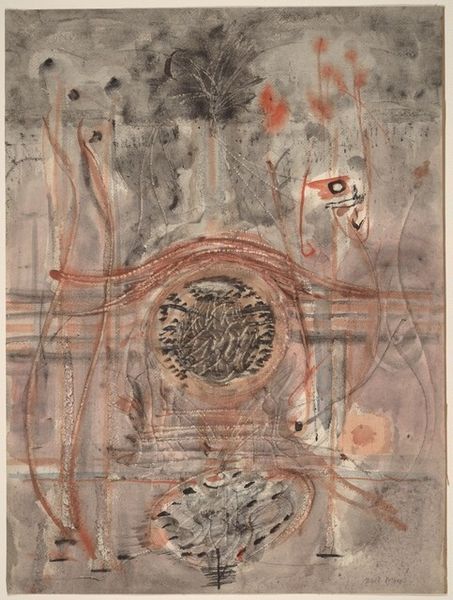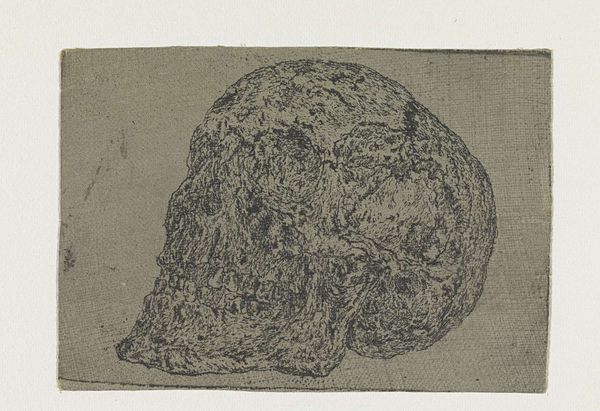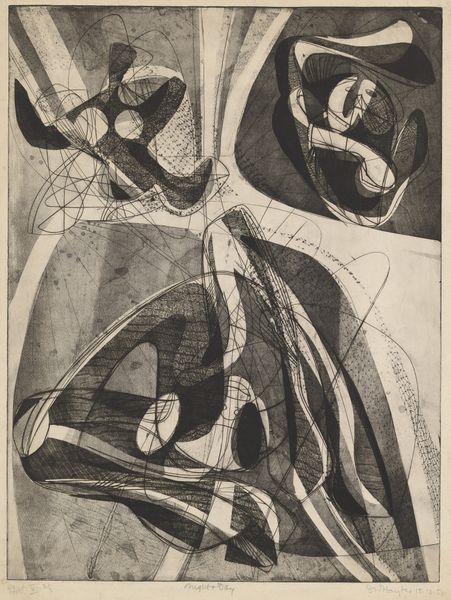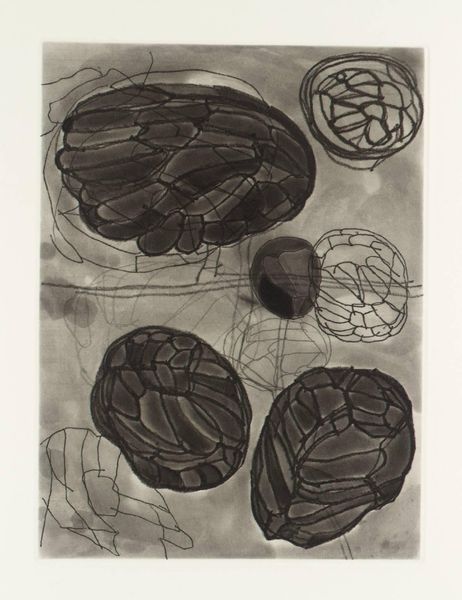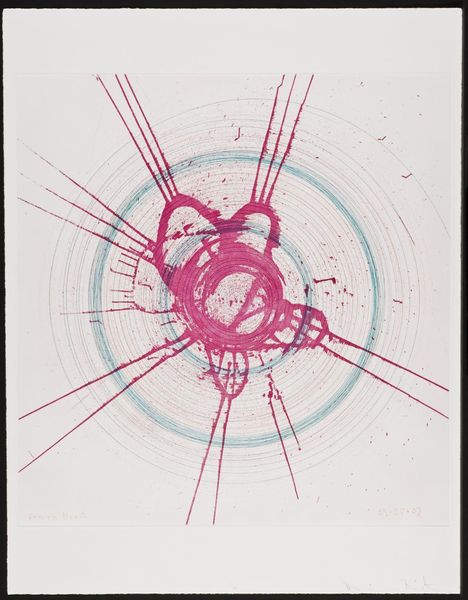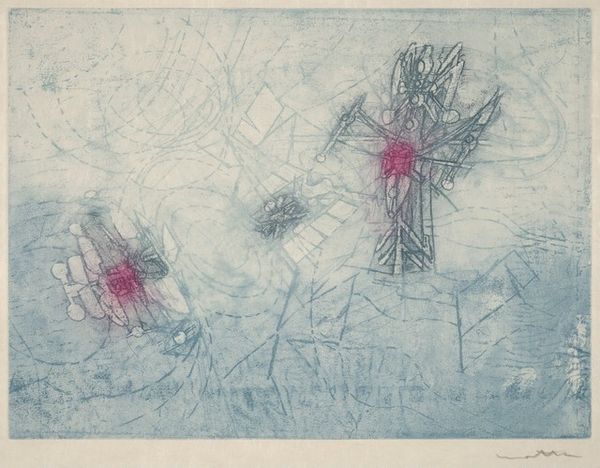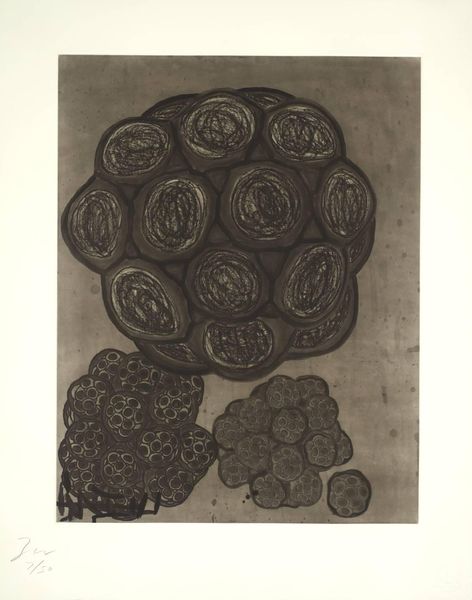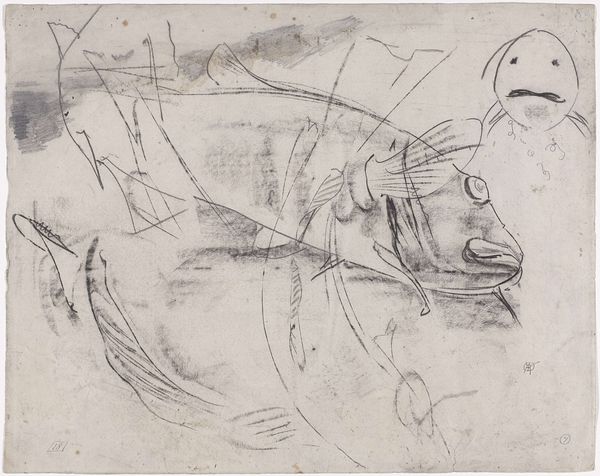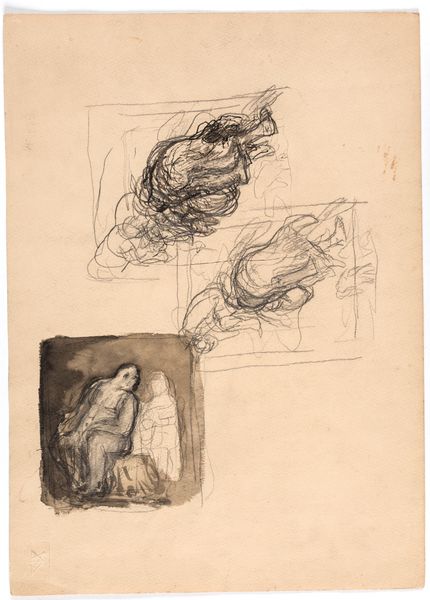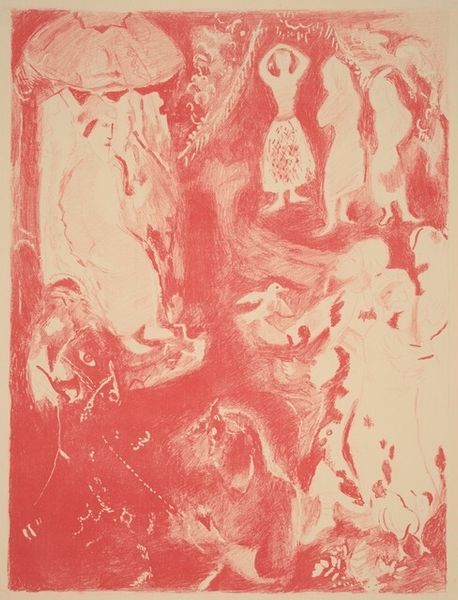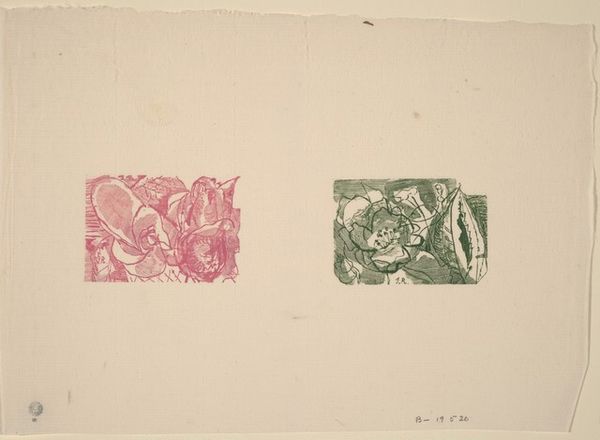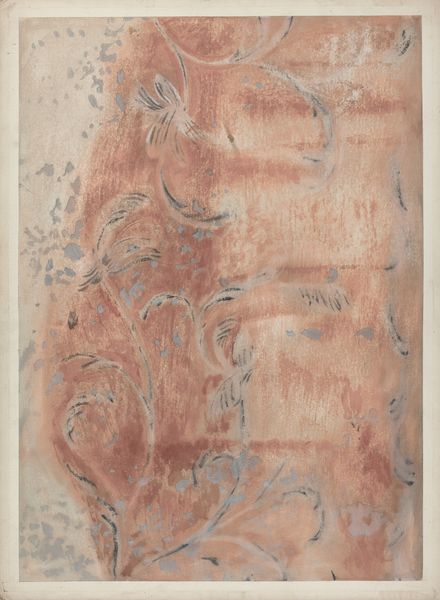
drawing, print, paper, ink
#
drawing
# print
#
paper
#
ink
#
geometric
#
abstraction
#
line
Dimensions: sheet: 51.2 x 65.5 cm (20 3/16 x 25 13/16 in.)
Copyright: National Gallery of Art: CC0 1.0
Curator: Let's take a look at Rolf Winnewisser’s "Untitled," a drawing and print made with ink on paper in 1986. What strikes you most about it? Editor: My gut reaction? It looks like a brain… a pomegranate… something organic that’s bursting with activity. The colors—these layers of crimson and plum—they evoke a sense of… urgent thoughts perhaps, or some sort of interior landscape feverishly churning. Curator: That's an interesting take. The overall form definitely alludes to something biological. However, looking closely at the marks themselves, the geometric lines, the hatching and cross-hatching, they seem more symbolic than descriptive, like an attempt to chart thought itself through archetypal patterns. Does that shift your perspective? Editor: A bit, yes. Now I see that, even amidst the implied organic form, these angular elements create friction, tension. Perhaps this is not a "natural" brain but one overlaid with societal structures, constraints… a brain in a box, of sorts. It still pulsates, though! Curator: Precisely. It's a liminal space, a field of tension between our inner drives and external conditioning. I'm particularly interested in the repeated motifs—notice the near constant use of right angles or corners in otherwise organic forms? It's a struggle between rational form and, as you said, those powerful, deeper emotions. Editor: And yet the texture, the ink bleeds and blurred lines—they subvert any sense of sterile geometry. There's something fundamentally, deliciously messy about this piece. The triangle at the top right too – such a basic, Platonic shape… but imperfect, like a symbol slightly decaying in meaning. Curator: A point that nicely resonates with Winnewisser's overarching concerns with the intersection between self-representation, cultural norms, and history – How do we interpret and communicate meaning given that signs are constantly being altered, re-negotiated? The symbolic triangle begins to feel unstable… Editor: Exactly. So, from initial burst of visceral recognition—that “brain-pomegranate,” we arrived at a sort of conflict of signification – form and language under immense pressure. I will admit – my read isn’t typically so analytical – but you pushed it a bit! Curator: A dialogue, right? It all rests within the play of seeing differently. Editor: Well, now I am certainly walking away feeling like this brain pomegranate, I mean Winnewisser's artwork, holds multitudes. It seems fitting!
Comments
No comments
Be the first to comment and join the conversation on the ultimate creative platform.
